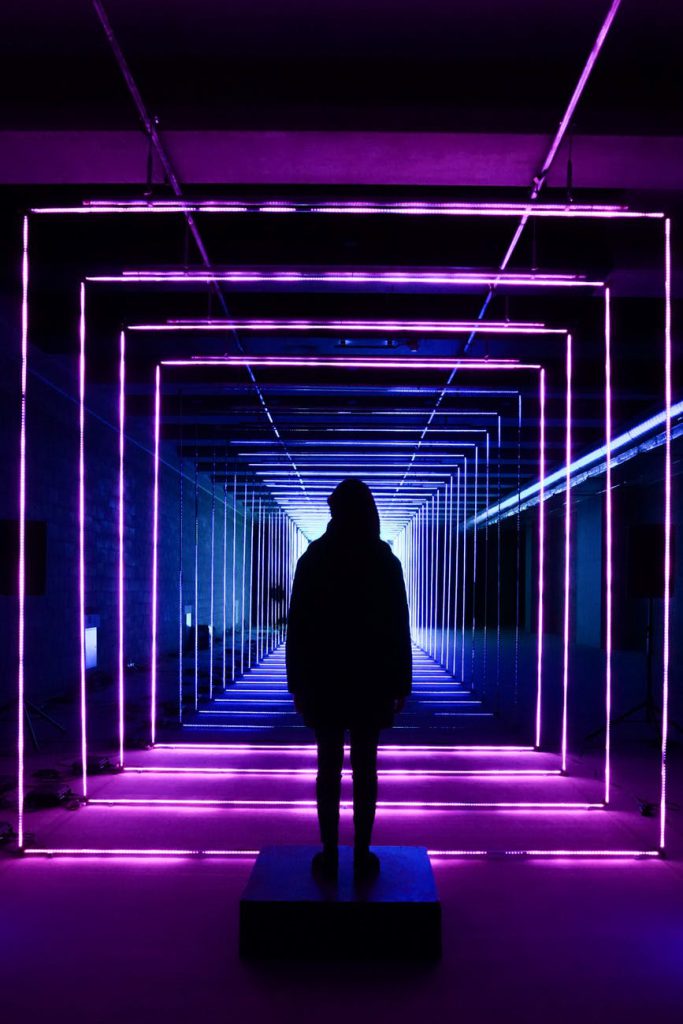Digital advocacy: The future of activism for survivors and activists

by Sandra Yu Activism is the policy or action of using vigorous campaigning to bring about political or social change. Prior to Sahiyo, I thought to be an activist was to be loud. Anything less than protests and demonstrations picketing for change outside the White House was not really activism. Actionable change came from legislation and policy changes. I scoffed at digital activism – trending hashtags and posting black squares on Instagram didn’t mean you were an activist. At Sahiyo as a programs intern, I gained a new appreciation for storytelling and digital advocacy as forms of healing and activism, respectively. In contrast to the physical mobilization of masses in protests, picketing, and policy-based activism, storytelling is a distinctly emotional and psychological mobilization. I remember watching my first Voices to End Female Genital Mutilation/Cutting (FGM/C) video – Change by Rhobi Samwelly. She shared her story in the short span of 3 minutes and 51 seconds, and in that short period of time, I felt as if I had visualized her pain, trauma, and conviction to end FGM/C. It is through storytelling that one will understand the need for activism; the picketing will come later. Storytelling is particularly impactful in activism against FGM/C. As a harmful and pervasive social norm in many cultures, FGM/C is silently maintained across generations under the guise of cultural normativity. To break the culture of silence is to risk ostracization from their families and communities. Yet, many survivors have taken that plunge and have engaged in storytelling to protect future women from being cut. As allies, it is our job to amplify their stories so that more people may hear them and become inspired to create change. I recently attended a webinar that spoke about how we can best amplify voices through digital advocacy. Digital Storytelling and Advocacy: How Stories Can Support Progressive Change was hosted by StoryCenter and moderated by Amy Hill; one of Sahiyo’s co-founders, Mariya Taher, presented on the Voices campaign as a panelist. In the webinar, Amy speaks about the need for storytelling as an avenue of advocacy. She presents research on how telling and listening to stories can increase self-esteem and wellbeing, help communities bond and become politicized, and inspire people to take action for change. I translate that as storytelling allows for transformation. It allows survivors and community members to transform the trauma of FGM/C on their bodies and mental health into a point of connection with others of the same community. Across activist communities, storytelling allows for a transformation from discomfort to vulnerability. Isabel, another intern at Sahiyo, wrote about her experience with StoryCenter and Sahiyo’s co-hosted webinar, Intersecting Stories, where she engaged in intimate storytelling that glimpsed into “the magical nature of storytelling – how words weave friendships, trust, and respect.” I believe storytelling has a way of transcending the individual to bind communities together through shared values and experiences. In the current age of digitization, we see stories framed in a variety of mediums such as Instagram, Twitter, and Facebook. While it may be easy to get lost in trends, hashtags, and stories in digital activism, I find that digital advocacy is equally powerful as traditional media in allowing us to amplify the voices and stories of survivors. The process of connecting people and communities across the world through a screen is an important concept to develop. I’m proud to be a part of an organization that creates change through digital advocacy and storytelling.
Crying out our mothers’ grief: How we allowed female genital mutilation to flourish in our communities

By Tamanna Taher When I began writing an article on female genital mutilation (FGM), I was adamant that my research be thorough, and my opinions be carefully articulated. However, I did not realise the mammoth task the latter would become. It has been two years since I started writing this article. I was a sophomore in college when I began, and I sit here as a senior, writing to pledge my solidarity to end FGM. My parents had managed to shield me from the hushed conversations that I always knew were happening. I was 14 years old when I was finally let into the discussions recounting personal experiences and stories from survivors in the family. I remember sitting in the backseat of my parents’ car, asking what they were whispering about. My father said it was okay to tell me, and explained FGM, or khatna, as it is known in the Dawoodi Bohra community. “It is when a female is circumcised.” “Circumcised? How? What?” “They (carefully separating us and them), believe that for a woman to be pure, she must undergo a surgical procedure in which she is circumcised.” “Oh.” At this moment, I was as any teenager finding out about such an issue would be – very uncomfortable. Deciding not to ask anything else, I sat back and wondered what exactly was there to be circumcised down there. This went on for a few very silent weeks. However, I finally mustered enough courage to ask the question that had been haunting me. Had it been done to me? I remember awkwardly questioning my mum one day, asking whether I was so young that I did not even remember. She informed me that she was vehemently against it, and neither me, nor my sister, had this procedure done. She said she would never, as she was a victim of it herself: a victim of family traditions and beliefs, and another one of the countless victims of groupthink. She said that she remembered her experience, and it was not something a woman forgets. She was seven years old. My mum never called herself a victim. She told me that she had never understood it fully. At the time she drew a parallel between being cut and getting an ear piercing. That is why, she explains now, she never questioned her mother. That is why she believes her mother never questioned my great grandmother. She thought of it as a necessity of growing up – not a religious doctrine, but a cultural tradition. I have chosen the words victim and survivor very purposefully. I believe if this had truly been something she did not feel was an injustice to women around the world, my mother would have chosen us to carry the burden of the tradition. But she stepped back, separating herself from the powerful clutches of “Log kya kahenge?” (“What will people say?”) She saved her daughters from the injustice she was too young to save herself from. I will forever be grateful to my mother, for being so brave and standing up against members of the family she loved and trusted, fighting them and protecting us from the practice that she had to suffer from herself, of which countless others still have to suffer the consequences. I began asking the women around me whether they had been subjected to any form of FGM. I was appalled at how many of them said yes. I was even more revolted when I found out that my family had been divided by this issue. There were people around me that agreed with what was happening, so much so that they decided to boycott all the members of the family who saw FGM for what it was – child abuse. This was a confusing time for me. I was very close to a cousin of mine who defended the right to have been cut. She saw it as something that should be a choice. I was almost swayed by her. I regret that I allowed that to happen, and I am embarrassed that I did not realise sooner the repercussions of staying silent in such situations. I see now that khatna is not a choice. The girls who are cut are not consenting. They are usually ignorant about what is being done to them – realising the effects only in adulthood, and at which point they must silently bear the psychological pain and trauma. A girl, in the moment, might only feel the excruciating pain of the instrument being used to perform the procedure, but when she becomes a woman, she will realise that the cuts run deeper than what she previously thought. This is why so many people have begun to speak up. This is exactly why Sahiyo – United Against Female Genital Cutting as an organization exists. Children cannot make these decisions, and you cannot legally call them consenting beings. They do not have full knowledge, and they do not realise the gravity. To anyone who argues otherwise, I would like to present several stories. One of the women I spoke to told me that she had been promised ice cream if she went. She was only 8 years old; an adult would recognise that as manipulation. Another told me that her mother said she was going to see a doctor because she was sick. That is universally recognised as deceit. I even had someone tell me that her mother had slapped her and told her that she was doing this for God. That is plain and simple coercion. But, most importantly, all of the above is child abuse, manifesting in its verbal, emotional and physical forms. You might be thinking, but what will speaking up do? We need you to understand that every voice matters because we are speaking for those that had been stripped of theirs. You may also be thinking there is so much awareness. The number of girls subjected to this must be falling. That is far
मैं किसके साथ सोती हूँ यह फैसला मेरा दिमाग करता है, मेरा ‘क्लिटोरिस’ नहीं

(This post was originally published in English on March 22, 2017. You can read the English version here.) लेखक: सबाहत जहाँ उम्र: 24देश: भारत मैं एक कैफे में बैठकर सोच रही हूँ, क्या मैं अपनी बेटी के साथ जननांग विकृति जैसी दर्दभरी प्रथा को निभाना चाहूँगी या नहीं, जैसा मेरी माँ ने मेरे साथ मज़हब के नाम पर किया था। मैं 24 साल की हूँ, पत्रकारिता की पढ़ाई कर रही हूँ, एक ऐसे समुदाय की मुस्लिम लड़की हूँ जो आज भी अंधे होकर महिला जननांग विकृति (Female Genital Mutilation – FGM) की प्रथा को ढो रहे हैं। पूरी जिंदगी मेरा भरोसा था कि FGM मेरे स्वास्थ्य के लिए अच्छा है, और कि जो भी पेशाब संबंधी दिक्कतें मुझे हो रही हैं उन सबका इससे कोई संबंध नहीं है। मुझे अहसास ही नहीं था कि मेरी सबसे बड़ी समस्या यह थी कि मेरा क्लिटोरिस सात साल की उम्र में काट दिया गया था। मुझे तो यह भी याद नहीं है कि यह कैसे हुआ था, या इसमें मुझे दर्द हुआ था या नहीं। और मुझे कभी सोचने का मौका नहीं मिला क्योंकि जब मेरी माँ ने कहा कि यह मेरे स्वास्थ्य के लिए अच्छा है तो मुझे उन पर भरोसा था। मैं उनको दोष नहीं देती हूँ लेकिन मैं प्रथा को दोषी मानती हूँ। बहुत से मुस्लिम फिरके इसे नहीं मानते हैं लेकिन मेरा समुदाय मानता है। पहली बार एफजीएम के बारे में मुझे तब पता चला जब मैंने लेखक अयान हिरसी अली की किताब पढ़ी। उसके बाद मैंने हिंदुस्तान टाइम्स में सहियो के बारे में पढ़ा था। मैं गहरे सदमे में थी और मैंने मेरी माँ को कॉल किया। शांत दिमाग से मैंने उनसे पूछा, “माँ, आपने मेरे साथ ऐसा क्यों किया?” उन्होंने कहा, “बेटा क्योंकि यह यौन उत्तेजनाओं को नियंत्रित करेगा, तुम संभोग के लिए आतुर नहीं रहोगी और तुम्हारा कुँआरापन बना रहेगा।” मैंने सोचा, यह सब कुँआरेपन के लिए है! क्या इसीलिए मुझे समय-समय पर पेशाब संबंधी दिक्कतों से जूझना पड़ता है? किसी के साथ सोना है या नहीं यह मेरा मामला है, मेरी इच्छा है। यह मेरा दिमाग है जो इसका फैसला लेगा, मेरा क्लिटोरिस नहीं! मेरे पास अपनी माँ से कहने के लिए कुछ नहीं था, मैंने बस कहा “ठीक है” और कॉल को काट दिया। मुझे उनके ऊपर गुस्सा नहीं है, उन्होंने तो वह किया जो उनकी संस्कृति और मज़हब ने सिखाया था। हाँ, शारिरीक सम्बन्ध के दौरान मुझे दिक्कतें होती हैं। यह दर्दभरा है और यह समस्या भरा है। इस प्रथा से मेरी यौन उत्तेजना नहीं रूकी बल्कि इसने मेरे लिए शारीरिक संबंध को मुश्किल बना दिया। मैं एक पढ़ी-लिखी महिला हूँ और मैं FGM के खिलाफ खड़ी हो रही हूँ। लोगों को अहसास कराने के लिए कि यह गलत है, मैं हर मुमकिन कोशिश करूँगी। साथ खड़े होने और इस बारे में बात करने के लिए मैं सहियो को धन्यवाद देती हूँ। मुझे खुशी है कि इस बारे में बात करने को लेकर जो शर्म का माहौल था वो खत्म हो गया है और मैं एक FGM पीड़ित के रूप में अपना दुख साझा कर सकती हूँ। (इस पोस्ट का लेख मूल रूप से 23 फरवरी, 2017 को इस ब्लॉग पर छपा था: Wanderlustbeau)
